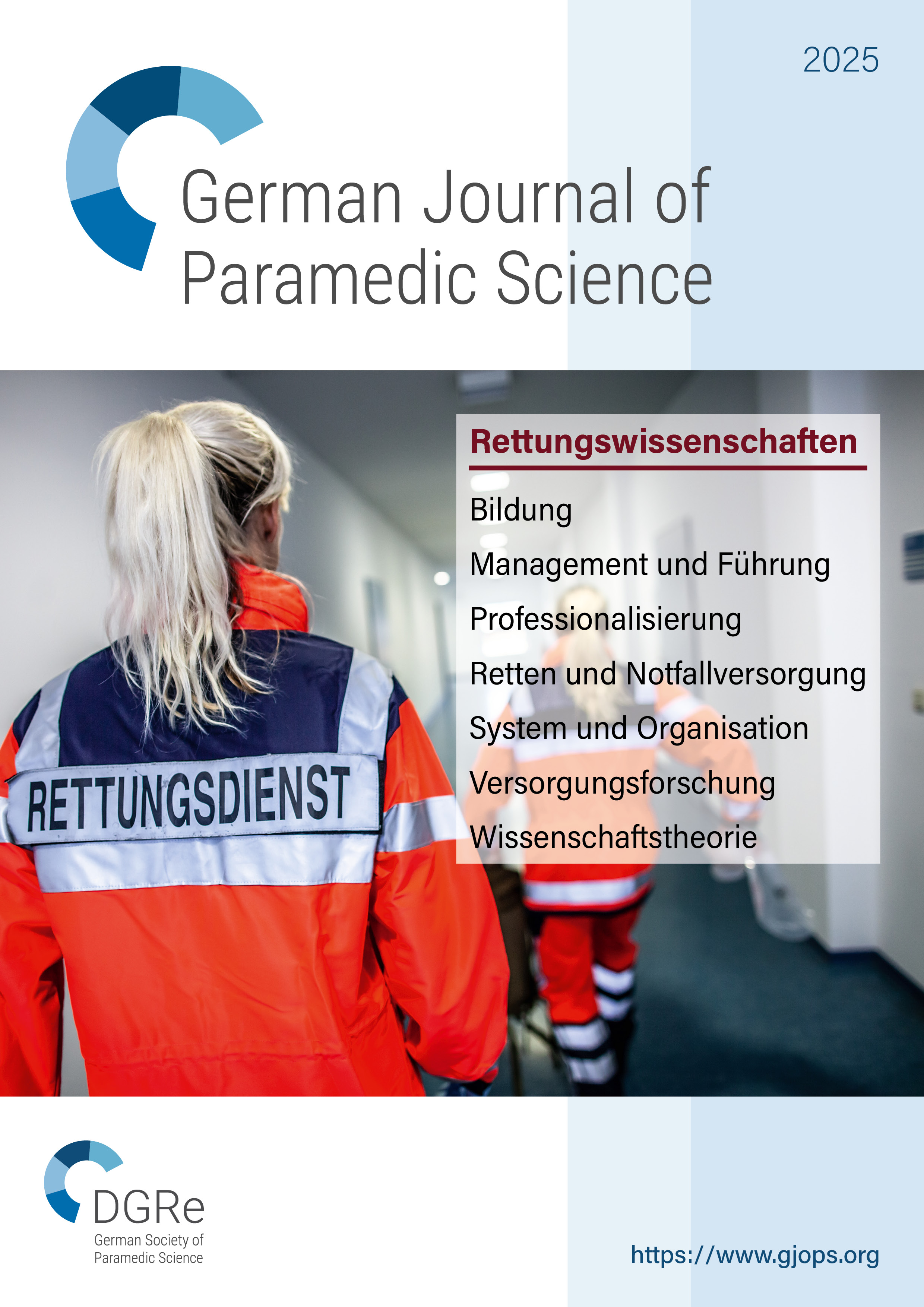Teach-the-Teacher in Basic Life Support
How effective is a 120-minute teacher training event?
DOI:
https://doi.org/10.25974/gjops.v2i1.40Keywords:
Basic life support, Bystander Resuscitation, Transfer, Teacher training, Community CPR actionsAbstract
Background:
Widespread teaching of Basic Life Support (BLS) in the German schools lessons has been a recommendation of medical societies (ERC, GRC, DGAI, etc.), the WHO and the BzgA in order to contribute to increasing bystander resuscitation rates (2023: approx. 50%). Implementation in schools is currently optional and varies significantly. However, teachers are considered effective trainers. The aim of this article was therefore to evaluate a 120-minute training course for teachers with regard to motivation, transfer intention and practical skills (BLS). The study examined specific transfer variables (e.g. motivation to participate, ability to apply and multiply, teacher self-efficacy and an overall score for compression-only resuscitation.
Methods:
48 teachers were surveyed before the start of the event using a baseline questionnaire on basic participants’ data and motivation to participate, and at the end on several transfer variables, adapted from Vigerske (2017).
The overall BLS performance (score) (Laerdal QCPR) were recorded in 3 test cycles (baseline, training, test). The differences in grouping variables were tested using Kruskal-Wallis, those of the BLS test time points using rmANOVA.
Results:
Data from N = 47 teachers were available. The scale reliability was satisfactory. Gender-related differences in the transfer variables (questionnaire) were observed: male participants were more motivated and reported better self-efficacy for implementation (p = .014 and .045 respectively). Women reported a significantly higher level of reflection in relation to pupils' views and their own attitudes. If implementation success in 6 months was affirmed, the motivation to participate (p = .003) or the commitment on short-term implementation (p = .002) was significantly higher. If the transfer effort was assessed as a low additional workload, those participants were more motivated (p = .003) and reported significantly better self-efficacy (p = .010).
The average BLS scores increased with each run to a final score of 97.51 ± 5.88 percent (N = 47). The rmANOVA revealed a significant difference for the time effect (F(1.23;56.50) = 7.20; p = .006; η2p = .14) with the most noticeable difference between test time point 1 and 2 (ΔMW = 6.49%; p = .037). Interaction effects were not detected.
Conclusion:
Within given limitations, this paper provides some evidence that likelihood of implementation and assessment of workload differ based on motivation, empowerment and self-efficacy, but that single trainings can still equalize practical BLS performance of teachers regardless of training status.
Downloads
Additional Files
Published
License
Copyright (c) 2025 Rico Dumcke, Claas Wegner, Niels Rahe-Meyer

This work is licensed under a Creative Commons Attribution-ShareAlike 4.0 International License.
We publish open access under the Creative Commons BY-SA 4.0 licence (https://creativecommons.org/licenses/by-sa/4.0/?ref=chooser-v1).
Content may be redistributed and reprocessed (including for commercial purposes), provided that the original source is cited and the same licence conditions apply.






